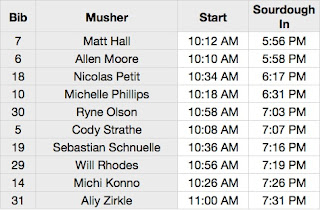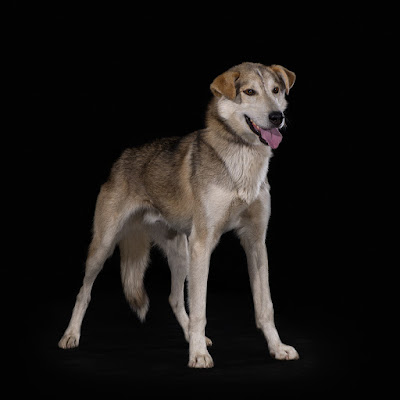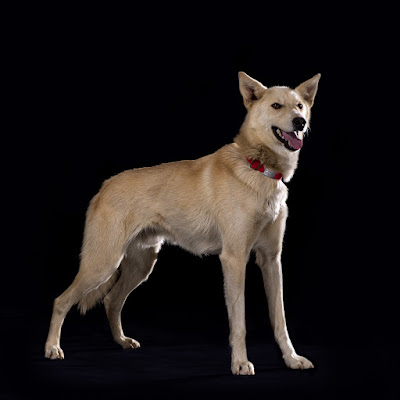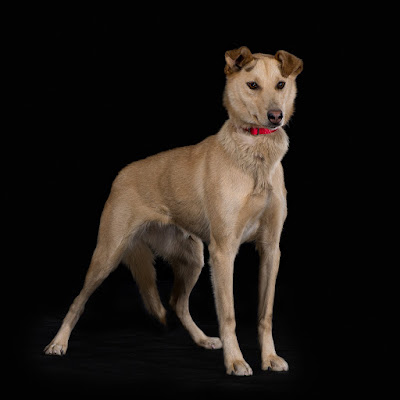The top teams have all completed their rests at Meiers Lake and are on the trail to Tolsona. With two of four checkpoint rests now in the books, we can make some observations about various musher strategies. We can also see the value of handler/support teams who are diligent about doing clock-math despite being exhausted, cold and hungry!
In this table, you can see that first-half rest strategies have ranged from taking only half the required total of 18 hours in the case of Ryne Olson and Nic Petit, to taking closer to two-thirds by most of the other mushers.
You can also see that Allen and Aliy have, as usual, exactly nailed their rest times to “give back” their start differentials. In both cases, 11 hours of rest plus their start differentials (64 & 14 minutes) leave the Black and Red teams with exactly 7 hours of rest due en route to the finish line.
Getting that right is not only important for purposes of not losing any time, it is a matter of pride for the teams to be on top of their game. Aliy and Allen rely on their handlers to advise them about the clock. Great job team!
Why is this exact timing important? Well, the CB300 rules are explicit that any rest periods will only count in 30-minute increments:
“One (1) mandatory layover of six (6) hours plus start differential at any checkpoint. An additional accumulation of twelve (12) hours at any of the checkpoints, in 30 minute increments.”
If a team rests for, say, 6 hours and 11 minutes, those last 11 minutes do not count against their required time and will simply be lost to the team. Every minute counts, and it is unfortunate to wait in a checkpoint for minutes that do not count toward the requirement.
It’s not obvious in the table, but it looks to me like several other top teams have also “hit their time marks” exactly. For example, Michelle Phillips rested 6:56 in Meiers, exactly her 6-hour mandatory plus 56 minute differential. The same looks to be true for Nic Petit and Paige Drobny who have even 30-minute rests remaining. Ryne hasn’t taken her long rest yet, so she will make up her 16 minutes soon. It looks to me like Matt Hall missed the mark, taking 7:14 in Sourdough instead of the 7:02 that was required (6:00 + 1:02). If that is accurate, those 12 minutes are lost. I’ll let you try to suss out the rest of the times for yourself.
I’ve just gotten an email from Moira with a full update, so I’ll leave this topic and post her story very soon… Go SPK














